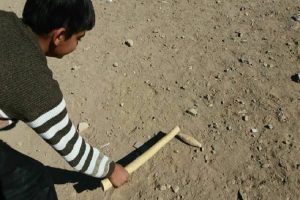In the past, when the science of psychology did not exist, people did not have proper knowledge of mental illnesses. They attributed such occurrences that shattered the patient’s soul to supernatural forces. In South Iran, mental illness was linked to wild spirits that had to be removed from the patient’s body with a special ritual. This ritual was called “Zar,” and they knew its healing value. Zar is worthy of investigation from the point of view of rituals and beliefs tied to it.
The Persian Gulf residents believed that Zars are a group of fairies and demons that go inside someone’s body with strong winds and make them crazy. Zar ritual was performed in Hormozgan to drive out invisible creatures. The word Zar itself means “disturbed” and “helpless,” It is considered one of the strongest and most destructive winds that trapped the patient.

Zar ritual is considered to be derived from the beliefs of the East Africa tribes, which has roots in Shamanism (witch medicine). Sailors brought this ritual with them to the coastal areas of the seas, and its signs appeared even around the Persian Gulf. Shamanism is a very ancient treatment and medicine, which was used in Central Asia thousands of years ago. Shamans were witch doctors and claimed to cure patients with ecstatic works.

The ritual reached the Persian Gulf coast and spread to Bandar Abbas, Minab, Bandar Lange, and Qeshm Island. They call those with mental illness “Badzadeh” or “havaie” (meaning struck by the wind). With the Zar ritual’s help, they tried to draw out the poisonous wind that had entered the patient’s body and thus cure him. This work was done by performing prayers, vows, and other behaviors. This ritual came to the aid of those people who showed peculiar behavior that they did not have the power or the will to control.

In the belief of those who performed the Zar ritual, there were various disease-causing winds, and each one had a name, such as Babazar, Mamazar, Babanoban, and Mamanoban. The treatment of each wind had its witch doctor. First, he carefully washed the sick person’s body and ensured the patient did not see anyone and no animal approached him for a week. His feet were also embayed with a medicine called “Gareh Kooh.” This medicine was a mixture of saffron, basil, cardamom, nutmeg, and other things. After seven days and nights, they would put the patient to sleep, tie his leg with the goat’s hair, and continue the treatment by burning it and holding it under the patient’s nose. At the same time, they gently hit the patient’s body with a bamboo stick and believed that this way, the demon would leave the patient’s body. But the wind in the patient’s head needed a different treatment, which was also treated with a special ritual. This ritual was called “Bazi (game),” and most of its participants were young girls who sang with a pleasant voice and moved their hands and legs, as though they were performing a ritual dance. During this ceremony a table of food and plants was spread out for the patient to eat from.
The Zar ritual also has other parts, all done with great precision and focus. Investigations and research have been carried out about this ritual, which shows that although it is not an Iranian ritual, it has been performed among the people of southern Iran.










